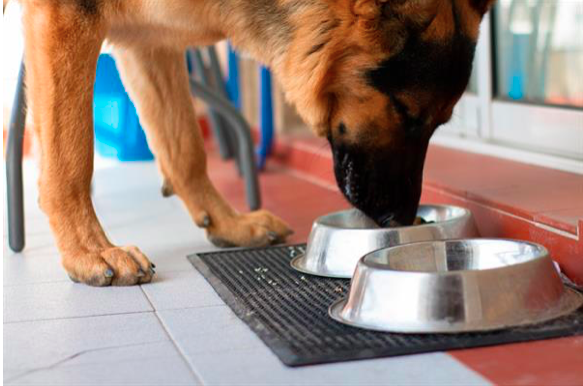Study confirms rise in megaesophagus cases in dogs was linked to pet food

A new report has found that the increase in megaesophagus cases in Australia in 2017 and 2018 can be linked to Advance Dermocare™ pet food.
Megaesophagus is an enlargement of the oesophagus (the muscular tube connecting the throat to the stomach) that limits the movement of food and liquid down to the stomach.
Beginning in late 2017 there was a marked increase in the number of megaoesophagus cases diagnosed by Australian veterinarians, far more than the number of cases expected given the size of the Australian pet dog population.
Researchers at the University of Melbourne’s U-Vet Hospital conducted an epidemiological analysis (to determine any statistical link between the disease and a risk factor), a clinical assessment of canine patients and food testing.
The study that revealed a significant statistical association between the use of Advance Dermocare™ and diagnosis of megaoesophagus in dogs.
The findings also showed a subsequent decrease in the number of megaoesophagus cases following voluntary withdrawal of the product from the market indicating that Advance Dermocare™ was linked to the 2017/ 2018 outbreak.
U-Vet Hospital Director Caroline Mansfield led the study and said when researchers looked at a sub-set of dogs with megaoesophagus, the odds of them having being fed Mars Petcare Advance Dermocare™ in the six months prior to diagnosis was 437* times greater for cases, compared with controls.
“This is an extremely strong association, there is about a one in a million probability that this occurred by chance, supporting the hypothesis that Advance Dermocare™ was associated with this outbreak of idiopathic megaoesophagus in dogs,” Associate Professor Mansfield said.
“Not all dogs fed Advance Dermocare™ developed megaoesophagus, but for dogs in the same household as another affected dog, had a higher chance of developing megaoesophagus themselves than the rest of the dog population.”
The clinical investigation into the dog deaths found that there was atrophy (wasting of tissue) of the distal oesophagus, resulting from lack of functional innervation (nerve supply), with some dogs also having atrophy of their laryngeal muscles.
All diet testing was performed at independent laboratories, with control versus test diets indistinguishable by testing personnel.
Nutritional analysis of the diet showed that there were no nutritional excesses or deficiencies. Screening for standard toxins (using an independent laboratory), and more focused screening for substances associated with neurological disorders (eg acrylamide, hexane) or with fish content (eg paralytic shellfish), failed to identify levels of any single analyte at known toxic concentrations in any of the food samples or tissues tested.
There were some analytes that were higher in the tested diets than in control diets or that were detected but for which there is no known upper safety limit for chronic exposure in humans or dogs.
“The next stage of the investigation will be to see if any of these analytes potentially could have a localised effect in the oesophagus, an additive or cumulative impact, or if there are unknown toxin or toxins undetectable with current testing. More extensive laboratory and ingredient testing will be required,” Associate Professor Mansfield said.
The report noted that as no single toxin was identified, chronic exposure to or interaction of dietary substances along with potentially physical characteristics of the dog kibble must be considered.
The study showed no damage was identified in the brain, spinal cord or muscles/nerves elsewhere in the body. No definitive neurological abnormality was evident to indicate possible causes when analysing most of the samples microscopically.
“We suggest that the primary cause of this outbreak of megaesophagus is likely to be multifactorial. As not all dogs fed this diet were affected, there may be some individual factors such as breed, predisposition to food intolerance or household factors contributing,” Associate Professor Mansfield said.
“We would like to thank all of the members of the public who contributed to the study. The study authors thank the generous contribution of time, information and material by dog handlers and pet owners throughout Australia.
“This event has clearly affected many people, and their willingness to assist in the investigation has been incredibly beneficial.”
Owners who have contributed to the study have been sent a copy of the report.
*437 times (95 per cent confidence that the result lies within the interval 80 to 2361)
Study authors included Associate Professor Caroline Mansfield, Dr Michelle Renwick, Professor Mark Stevenson and Dr Anke Wiethoelter from the Melbourne Veterinary School, Faculty of Veterinary and Agricultural Sciences, University of Melbourne.